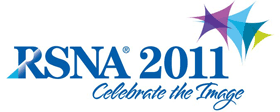
Abstract Archives of the RSNA, 2011
SSK14-05
Relative Radiation Dose Comparison of Volumetric vs Helical Acquisition Mode on a 320-Row Volume CT Scanner at Constant Image Quality: Unique Mapping of CT Scanner Characteristics Using a Phantom-based Quantitative Image Quality Metric
Scientific Formal (Paper) Presentations
Presented on November 30, 2011
Presented as part of SSK14: Pediatrics (Radiation Dose Reduction)
Daniel Jay Podberesky MD, Presenter: Author, Amirsys, Inc
Research support, Toshiba Corporation
Speakers Bureau, Toshiba Corporation
David Rohler PhD, Abstract Co-Author: Nothing to Disclose
Thomas Louis Toth, Abstract Co-Author: Consultant, General Electric Company
Former employee, General Electric Company
Co-owner, Plexar Associates, Inc
Employee, Plexar Associates, Inc
David Larson MD, Abstract Co-Author: Nothing to Disclose
Arjun Maniyedath MS, Abstract Co-Author: Nothing to Disclose
Marilyn J. Goske MD, Abstract Co-Author: Nothing to Disclose
Steven Izen PhD, Abstract Co-Author: Nothing to Disclose
Christopher N. Alsip, Abstract Co-Author: Nothing to Disclose
Michael F. McNitt-Gray PhD, Abstract Co-Author: Institutional research agreement, Siemens AG
Research grant, Siemens AG
Instructor, Medical Technology Management Institute
Optimization of image quality/radiation exposure balance is particularly important in pediatric CT imaging. An objective quality metric that is quantitative would improve the current suboptimal subjective method of image analysis. An Extended Low Contrast Detectability image quality metric (ExLCD, Plexar Imaging, Shaker Heights, OH), employing a phantom and software, was developed to quantitatively characterize the detectability performance of a scanner over the full range of body sizes and scanner types, including different acquisition modes on the same scanner. ExLCD was used to characterize a 320-row volume CT at an academic children's hospital in order to standardize image quality and thereby reduce radiation dose.
A laboratory prototype of the ExLCD method utilizing components of the CatPhan 500 (Phantom Labs, Salem,NY) was used to measure performance of a 320-row volume CT (Aquilion One, Toshiba Medical Systems, Otawara, Japan) in the helical and volume acquisition modes. A sequence of protocols having a CTDIvol range of 1.2 - 142mGy as reported on the scanner console was acquired. Images were automatically analyzed and results recorded using previously described methods (RSNA 2010 presentation SSK15-01). Flux and dose ratios relative to the helical mode needed to maintain equivalent image quality over a flux index of 10 - 5,000 were determined. This flux index range encompasses pediatric patients with water equivalent diameters of 15 - 35cm, tube currents of 15 - 550mA, rotation times of 0.5 - 1.5s, and slice thicknesses of 1 - 5mm.
The ExLCD image quality performance curves indicated that the volume mode on the 320-row volume CT achieved comparable image quality to the helical mode with 15-20% lower CTDIvol over the full range of operating techniques and pediatric patient sizes.
The ExLCD quantitative image quality metric enables comparison of radiation doses associated with various acquisition modes on an individual CT scanner at a constant image quality. Keeping image quality constant, the volume mode on a 320-row volume CT uses 15-20% less radiation than the helical mode over the entire dose range and typical size range representative of pediatric patients.
The quantitative image quality metric, ExLCD, is a systematic method that allows radiologists to map the unique image quality characteristics of their CT scanners to optimize patient protocols.
Podberesky, D,
Rohler, D,
Toth, T,
Larson, D,
Maniyedath, A,
Goske, M,
Izen, S,
Alsip, C,
McNitt-Gray, M,
Relative Radiation Dose Comparison of Volumetric vs Helical Acquisition Mode on a 320-Row Volume CT Scanner at Constant Image Quality: Unique Mapping of CT Scanner Characteristics Using a Phantom-based Quantitative Image Quality Metric. Radiological Society of North America 2011 Scientific Assembly and Annual Meeting, November 26 - December 2, 2011 ,Chicago IL.
http://archive.rsna.org/2011/11006548.html

